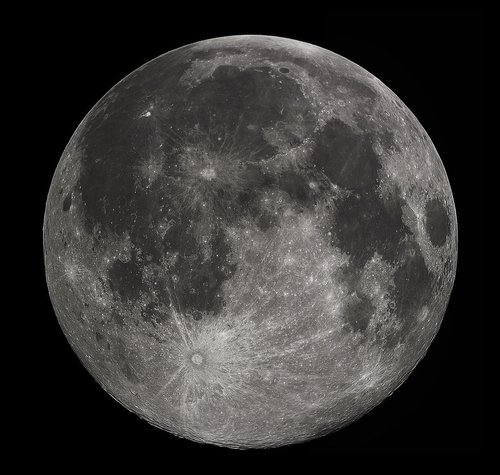Current Info for Observer
as of 04/25/2024 12:20 p.m.
Please login to view current observation details
General Info
as of 04/25/2024 12:20 p.m.
| Type | Moon |
| Constellation | Libra |
| Orbits | Earth |
| Right ascension | 15:19:12.17 (Hours) |
| Declination | -21:37:58.4 (Deg) |
| % illuminated | 97.682 |
| Mass | 7.3477e+22 kg |
Earth's only natural satellite | |
☉ Solar Masses ⊕ Earth Masses j Jupiter Masses
Naked eye
300 points
Watched the lunar eclipse. It went completely red around 5am.

Orion Sky View Pro 8" EQ
300 points
I woke up around 4:30 to set up and view the "blood moon". By the time I had finished setting up in my backyard I had about 15 minutes until total eclipse. I took several pictures holding my phone up to the eyepiece. Unfortunately I was not able to get any partial eclipse shots as the moon was too low in the sky. The moon was a distinct hint of red but through the telescope the color was much more prominent.
8in telescopes at Bowling Green State University [2 Celestron and 2 Meade]
100 points
04/04/15 Lunar Eclipse
Photos were taken using my phone camera, Samsung Galaxy S4. This was my first time taking pictures on the telescope.
Observing conditions: the eclipse began when the moon was ~30 degrees alt, and continued until below the horizon. The sun began to rise, and the moon was no longer visible after a short time through the camera.

Link to album: http://imgur.com/a/2K8Ev#0
80mm refractor by william optics
100 points
Went up to Fremont's peak on Friday to camp out and see this sight. Very clear, especially nice with a wide field 80mm refractor.
Naked eye
300 points
Saw a tiny sliver of the eclipse before the moon was too low and the Sun came up.
Generate a finder chart
The following form will generate a PDF finder chart suitable for printing using to locate objects in the sky with your telescope!
The Date is only really useful for solar system objects, as deep space objects move measurably only on a galactic timescale.
The larger the F.O.V (field of view), the more "zoomed out" the object will appear. It can be helpful to print several charts of the same object with different field of views.
Limiting the magnitude (remember, lower magnitude means brighter!) of stars and objects can make sure your chart is not cluttered with dim objects that you may not be visible to you anyway. The defaults are good, but try experimenting with raising and lowering the values.
Please login to post comments
